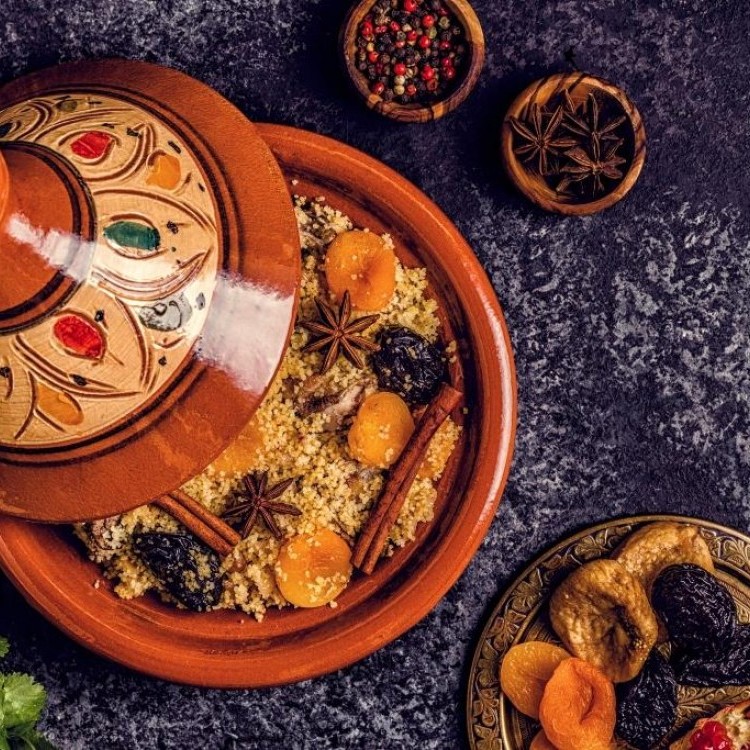Introduction
Moroccan cuisine is a rich, vibrant mix of flavors and aromas that tell a story of cultural diversity. If you’ve ever wondered how to bring a bit of Morocco into your kitchen, then you’re in for a treat. In this article, we’ll walk through some of the most famous Moroccan recipes, complete with ingredients and step-by-step preparation methods. Let’s dive into the world of Moroccan cooking and explore its most beloved dishes.
The Richness of Moroccan Cuisine
Moroccan cuisine stands out for its unique blend of Mediterranean, Arabic, and Berber flavors. What makes Moroccan food truly special is its use of spices and traditional cooking techniques.
Why Moroccan Food is Unique
Moroccan dishes are often a harmonious mix of sweet and savory, with unexpected ingredients like cinnamon, raisins, and preserved lemons.
Influences from Around the World
Moroccan cuisine has been influenced by various cultures, including Arabic, Jewish, French, and even Spanish traditions. These influences come together to create dishes with a distinct flavor profile that you won’t find anywhere else.
Classic Moroccan Dishes
Ready to try your hand at Moroccan cooking? Here are some classic recipes that capture the essence of Moroccan cuisine.
Tagine: Morocco’s Signature Dish

A traditional Moroccan tagine is a slow-cooked stew made with meat, vegetables, and a variety of spices. Named after the clay pot it’s cooked in, tagine dishes are known for their depth of flavor and tender texture.
Ingredients
- 1 lb (450g) lamb or chicken pieces
- 2 tbsp olive oil
- 1 large onion, finely chopped
- 3 garlic cloves, minced
- 1 tsp ground ginger
- 1 tsp ground cinnamon
- 1 tsp ground cumin
- Salt and pepper to taste
- 1 cup chicken or vegetable broth
- 1 cup dried apricots or prunes
- 1 tbsp honey
Preparation Method
- In a tagine pot or heavy skillet, heat the olive oil over medium heat.
- Add the onion and garlic, cooking until softened.
- Add the lamb or chicken, season with salt, pepper, ginger, cinnamon, and cumin, and brown on all sides.
- Add the broth, cover, and simmer for 1–1.5 hours, until the meat is tender.
- Stir in apricots or prunes and honey, then cook for another 10 minutes.
Couscous: The Staple of Moroccan Cuisine

Couscous is a versatile grain that serves as a base for many Moroccan dishes. It’s often served with vegetables and meat, seasoned with spices to enhance the flavor.
Ingredients
- 2 cups couscous
- 2 cups chicken or vegetable broth
- 2 tbsp olive oil
- 1 tsp turmeric
- Salt to taste
- Chopped vegetables (carrots, zucchini, and tomatoes)
- Chopped parsley for garnish
Preparation Method
- Heat the broth and bring to a simmer.
- Add turmeric and olive oil to the broth, then stir in couscous.
- Remove from heat and let the couscous sit for 5 minutes, fluffing with a fork.
- Serve with sautéed vegetables and garnish with chopped parsley.
Pastilla: A Sweet and Savory Delight

Pastilla is a unique Moroccan pastry filled with a savory mixture of meat, often pigeon or chicken, along with almonds, cinnamon, and sugar.
Ingredients
- 1 lb chicken breast or pigeon
- 1/2 cup ground almonds
- 1 tsp cinnamon
- 2 tbsp sugar
- Phyllo pastry sheets
- 1 egg, beaten
- Butter for brushing
Preparation Method
- Cook the chicken in a pan until tender, then shred and set aside.
- In a separate bowl, mix almonds, cinnamon, and sugar.
- Layer the phyllo sheets, brushing each layer with melted butter.
- Place the chicken and almond mixture in the center, folding the pastry over and brushing with egg.
- Bake at 350°F (175°C) for 20 minutes, until golden brown.
Harira: The Beloved Moroccan Soup

Harira is a traditional Moroccan soup made with lentils, chickpeas, tomatoes, and spices, often served during Ramadan.
Ingredients
- 1 cup chickpeas, soaked overnight
- 1/2 cup lentils
- 1 large onion, diced
- 2 cloves garlic, minced
- 1 tbsp ground cumin
- 1 tsp turmeric
- 1/2 tsp ground cinnamon
- 6 cups vegetable broth
- Fresh cilantro for garnish
Preparation Method
- In a large pot, sauté onions and garlic in olive oil.
- Add the chickpeas, lentils, and spices, then pour in the broth.
- Simmer for 1 hour or until chickpeas and lentils are tender.
- Serve garnished with fresh cilantro.
Spices and Flavors of Moroccan Cooking

Moroccan cuisine wouldn’t be complete without its signature spices.
Essential Spices and Herbs
Cumin, turmeric, ginger, cinnamon, and saffron are commonly used in Moroccan dishes, adding a distinct aroma and depth of flavor.
Traditional Spice Blends: Ras el Hanout
Ras el Hanout is a Moroccan spice mix that typically includes over a dozen spices. It’s used to flavor everything from meats to stews, giving dishes a warm and exotic taste.
Tips for Making Authentic Moroccan Dishes at Home
For authentic Moroccan flavors, use high-quality spices and fresh herbs. Traditional cooking methods, like slow-cooking in a tagine, will also help you achieve the rich taste that Moroccan food is known for.
Conclusion
Moroccan cuisine is a flavorful journey, filled with aromatic spices, sweet and savory combinations, and unique ingredients. With these recipes, you can experience a taste of Morocco right in your kitchen. Try out these dishes and discover the beauty of Moroccan flavors for yourself.
FAQs
- What are some essential spices for Moroccan cooking?
- Some key spices include cumin, cinnamon, turmeric, and ginger.
- What is a tagine, and how is it used?
- A tagine is a clay pot used in Moroccan cooking to slow-cook stews, allowing flavors to meld beautifully.
- Can I make these Moroccan dishes without a tagine?
- Yes, a heavy-bottomed pot or Dutch oven works well as a substitute for a tagine.
- Is Moroccan cuisine spicy?
- Moroccan food is aromatic rather than spicy-hot, focusing on flavors like cinnamon and ginger.
- What is Ras el Hanout, and where can I find it?
- Ras el Hanout is a Moroccan spice blend. You can find it at specialty spice shops or online.
Get Access Now: @SoloInTravel







